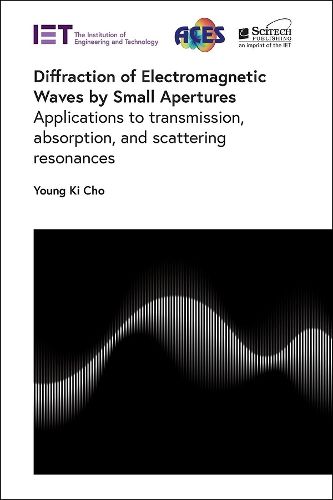Readings Newsletter
Become a Readings Member to make your shopping experience even easier.
Sign in or sign up for free!
You’re not far away from qualifying for FREE standard shipping within Australia
You’ve qualified for FREE standard shipping within Australia
The cart is loading…






This book deals with low-frequency diffraction characteristics of small aperture structures such as a narrow slit and a small hole and their periodic structures, with emphasis on the transmission maximum phenomena through those structures. A narrow slit structure in a conducting plane has been used as a simple model for a narrow slot planar antenna, for example, whereas a small hole structure has been widely used as an aperture-coupling element in a transmission cavity filter or a directional coupler in the microwave regime.
In writing this book, the author has aimed to provide a guide that will be useful in understanding a wide variety of resonance-related device technologies in the microwave and optics areas. The structure of the book is loosely divided into three parts: (1) transmission resonance (Chapters 3, 4, and 5), (2) absorption resonance (Chapter 6), and (3) scattering resonance (Chapter 7).
It is hoped that this book will help students and researchers in applied electromagnetics to understand the underlying physics of the various resonance phenomena in microwaves and optics. The readers are assumed to be equipped with basic knowledge of electromagnetism, microwave circuit theory, antenna theory, and numerical methods such as method of moments (MoM).
$9.00 standard shipping within Australia
FREE standard shipping within Australia for orders over $100.00
Express & International shipping calculated at checkout
This book deals with low-frequency diffraction characteristics of small aperture structures such as a narrow slit and a small hole and their periodic structures, with emphasis on the transmission maximum phenomena through those structures. A narrow slit structure in a conducting plane has been used as a simple model for a narrow slot planar antenna, for example, whereas a small hole structure has been widely used as an aperture-coupling element in a transmission cavity filter or a directional coupler in the microwave regime.
In writing this book, the author has aimed to provide a guide that will be useful in understanding a wide variety of resonance-related device technologies in the microwave and optics areas. The structure of the book is loosely divided into three parts: (1) transmission resonance (Chapters 3, 4, and 5), (2) absorption resonance (Chapter 6), and (3) scattering resonance (Chapter 7).
It is hoped that this book will help students and researchers in applied electromagnetics to understand the underlying physics of the various resonance phenomena in microwaves and optics. The readers are assumed to be equipped with basic knowledge of electromagnetism, microwave circuit theory, antenna theory, and numerical methods such as method of moments (MoM).